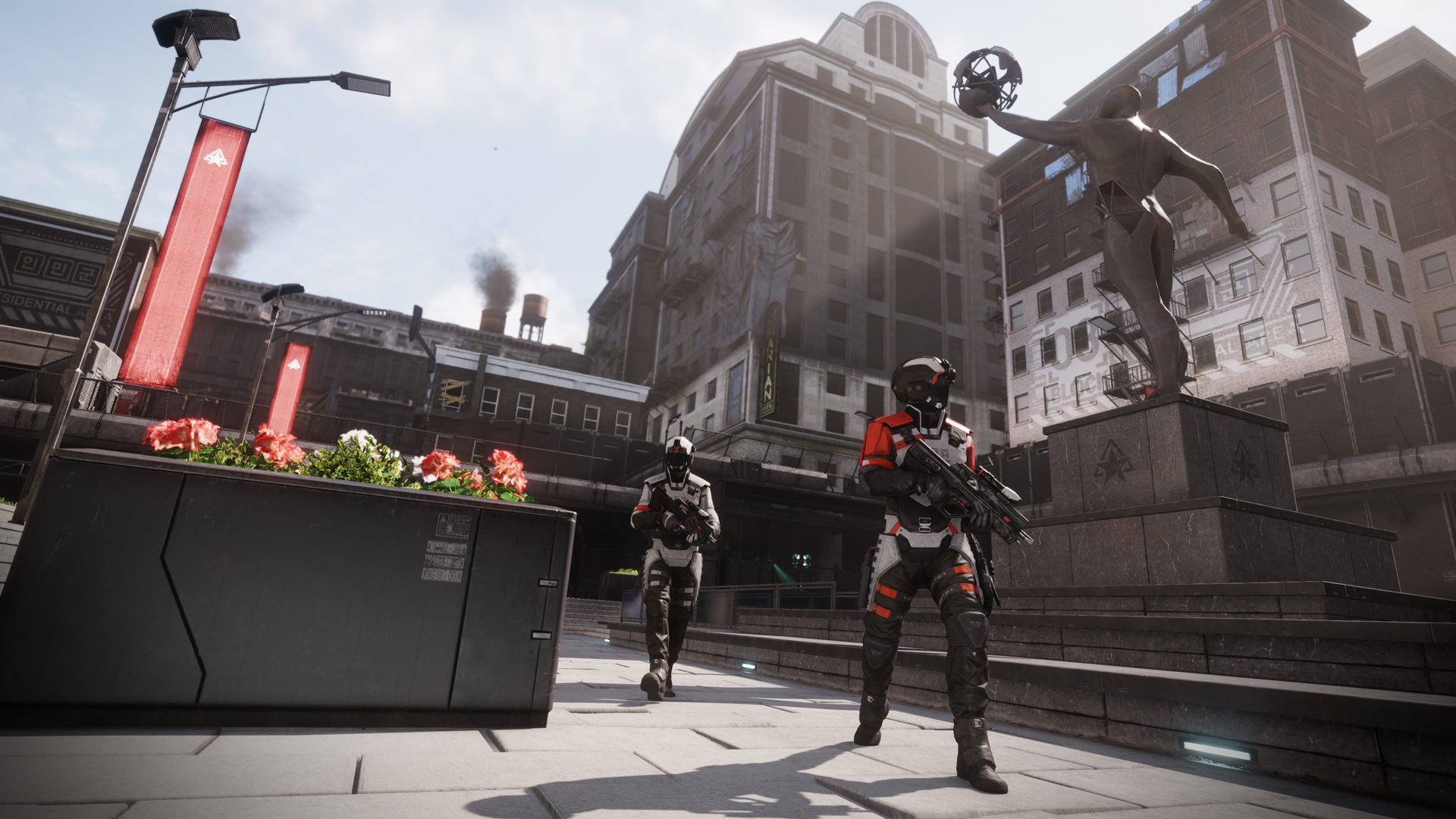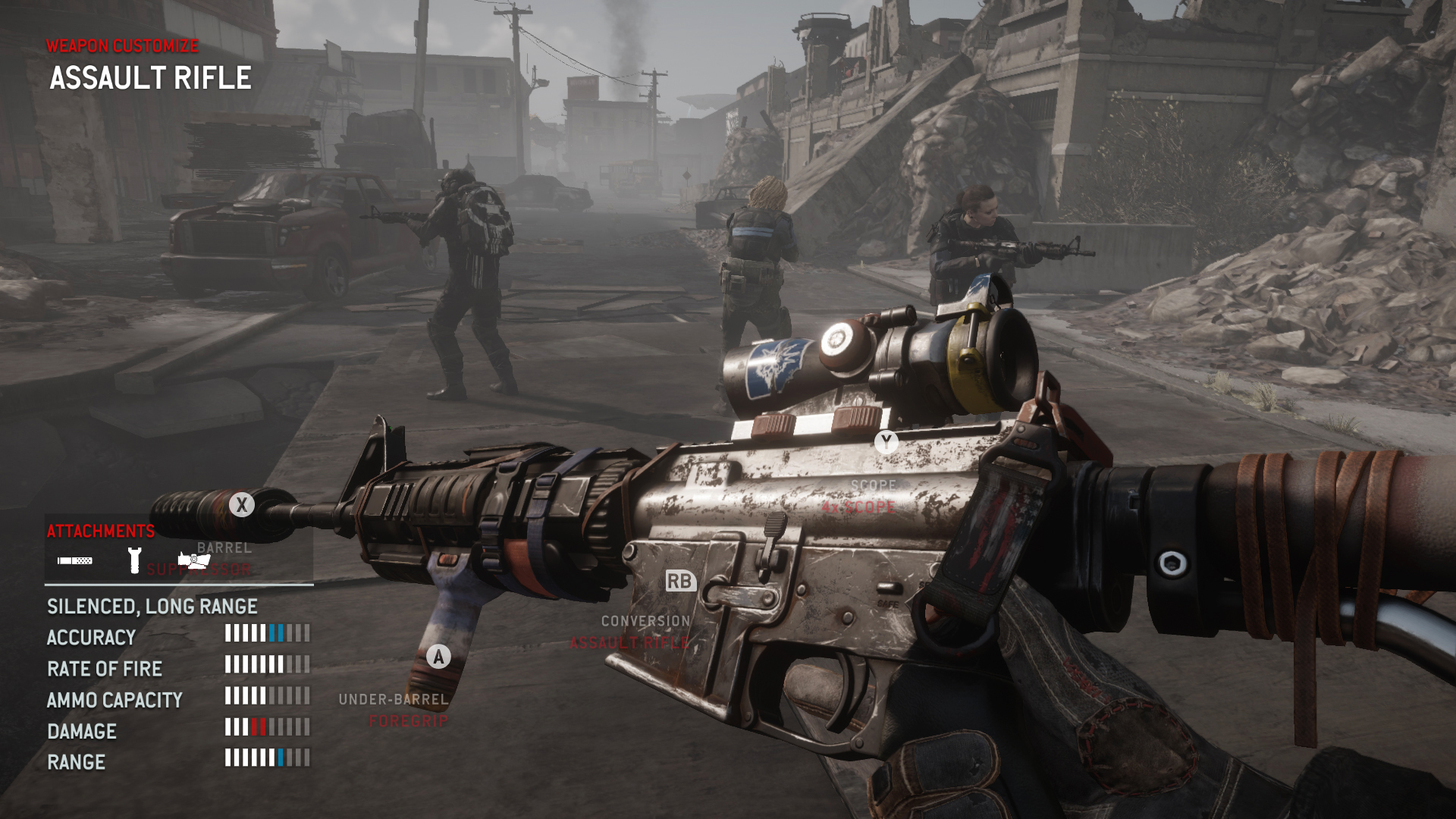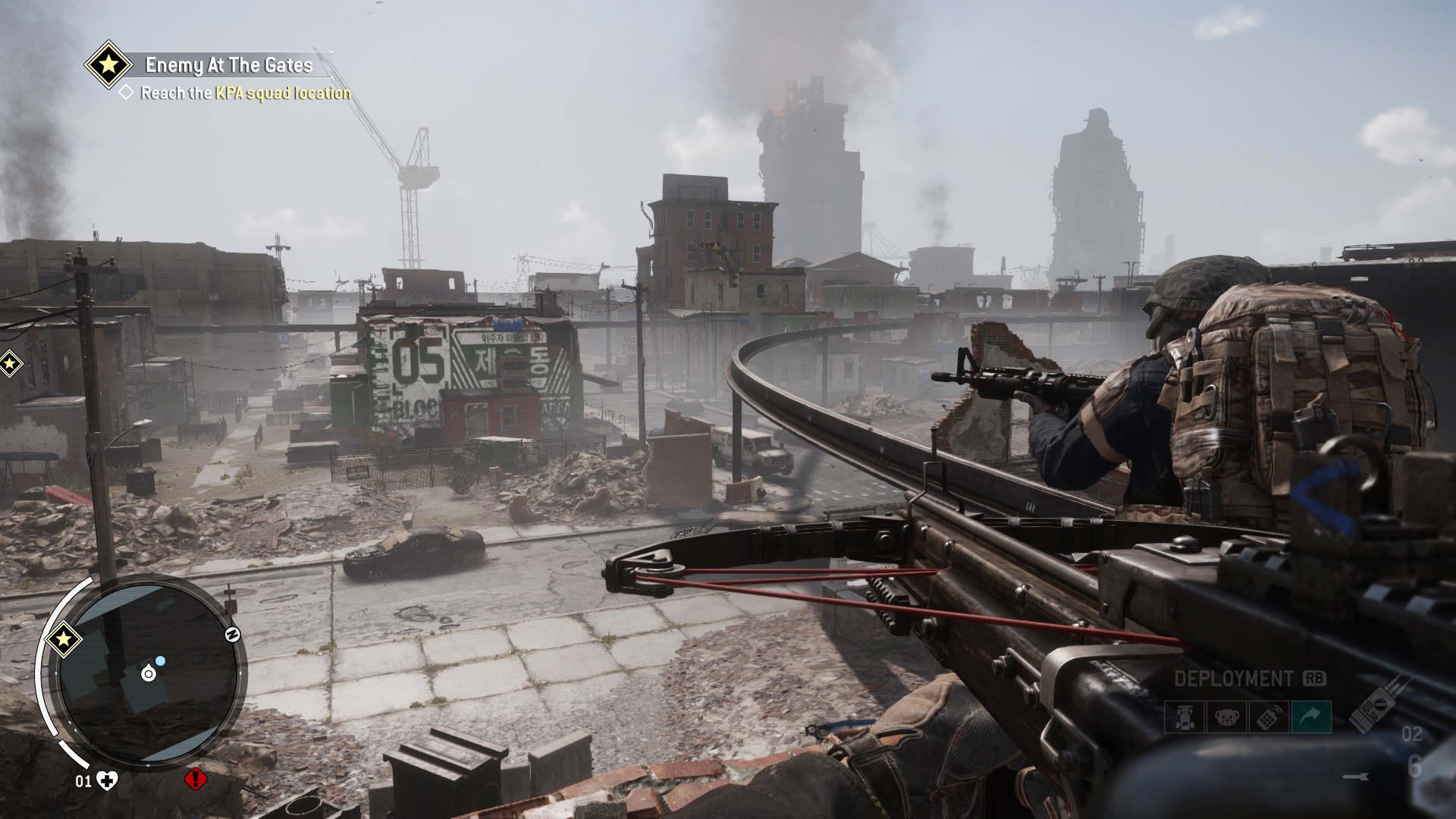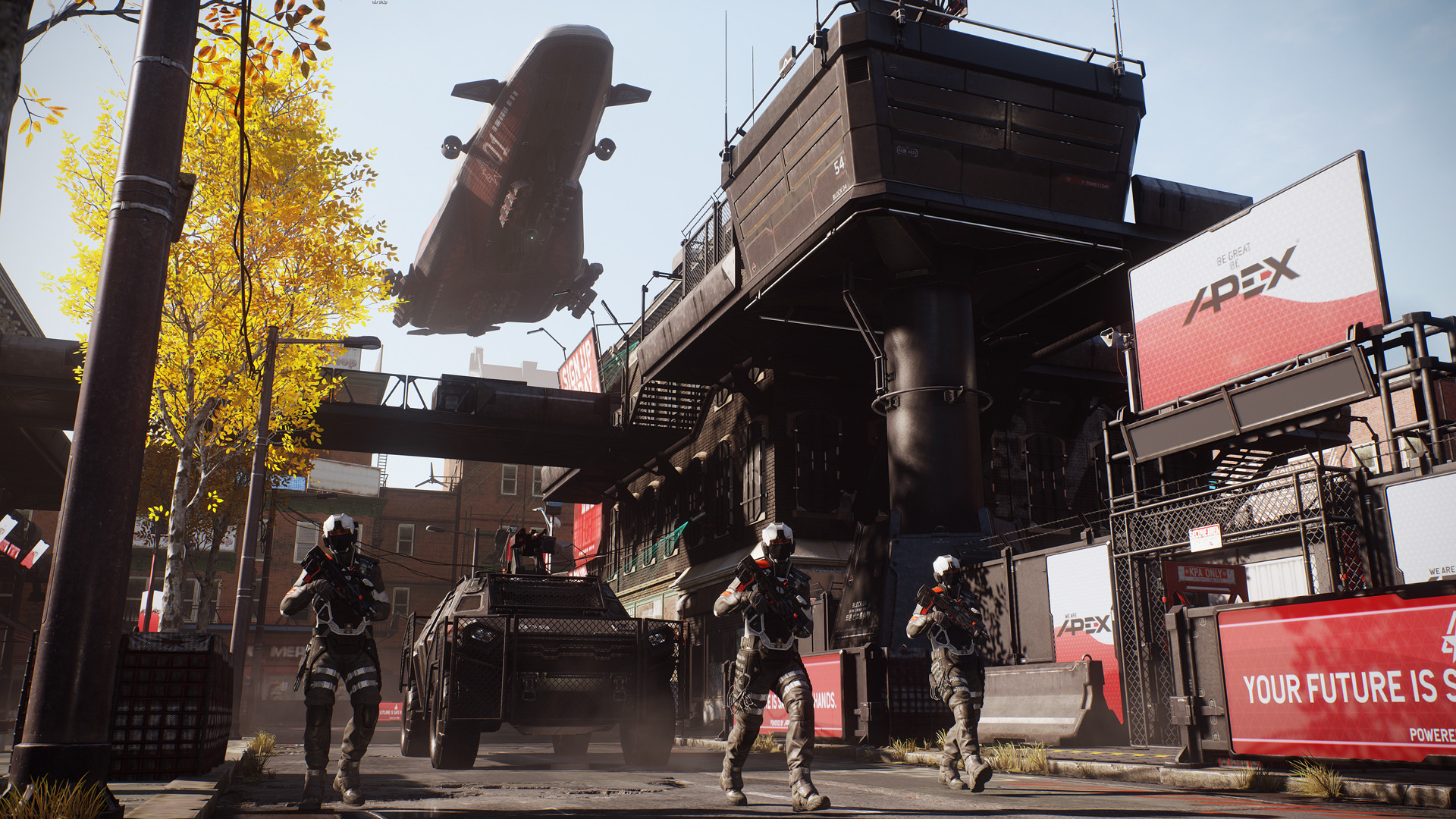Homefront: The Revolution, a first-person shooter set in a future and fictionalized Philadelphia conquered by North Korea, could have been fascinating. The storytelling and gameplay possibilities in exploring the hard themes of occupation, resistance, and more against the backdrop of America’s birthplace and its values, all in a guerrilla warfare open world, are nearly endless.
Instead, Homefront fails to to be any kind of revolution at all, and ends up as just another middling, iterative semi-modern military shooter with uninspired action and too flimsy a story to convince you to slog through it.
Separated into ruined “red zones” of open warfare and “yellow zones” of strained peace or collaboration, occupied Philadelphia looks damn good in the CryEngine 3 engine, especially at night. At times, sneaking through city streets patrolled by the Korean People’s Army and lined with decayed historic architecture of America’s founding, Homefront looks like a place of desperate and tenuous survival.
Maybe it’s because I’ve only seen it through It’s Always Sunny in Philadelphia and three failed trips to see the Rocky statue, but the city didn’t have that same faux familiarity of games set in New York or Los Angeles. The aesthetic is there, at least, but not much else.

For a game built around resistance and revolution, there’s a remarkable amount of inconsistency and incongruity with those themes. The most immediately apparent is the fact that, despite the game taking a good deal of time telling you how advanced they are, you can’t retrieve weapons from fallen enemies. The opening cinematic explains how they have top of the line weaponry that America’s military just had to have until things went south, but your team is stuck with guns that are held together with tape and adorned with “u mad bro?” graffiti. It gets even more ridiculous when several of the major missions are focused around getting or holding onto weapons stockpiles yet make no mention of this.

The worst of the conflict between what the game seeks to portray and what it actually does, however, is in the way you need to inspire the populace of the yellow zones to engage in outright revolt. Unlike red zones, the resistance and the KPA are not in open warfare here and the residents live somewhat peacefully. For each zone, you have to engage in a variety of activities, ranging from turning on resistance radios and destroying propaganda speakers, to freeing prisoners and stopping house raids, in addition to capturing strongholds just as in red zones.
Where it becomes a problem is the way there’s no real payoff, in two different ways.
Firstly, when you do enough to get a zone to rebel it all happens in unplayable cinematic scenes, and quick, lazy ones at that. There’s no rousing speech from your character or even a bit of combat as you lead the newly free people against the KPA. Instead, you turn on a radio and watch a few scenes of people getting riled up. Once the next load screen has passed, the environments have changed and now there are people burning things in the streets, waving their hands in their on top of cars and hitting things with baseball bats. It’s not even presented well either. On several occasions the guys with bats were just whacking away at chain link fences or brick walls in what seemed to be an error of randomization. It’s all completely devoid of any kind of spark or energy.
Secondly, there are almost no consequences for the acts of rebellion you and the resistance commit. Sure, there’s a couple of crackdowns that happen in cut scenes, but for the most part it’s dull lip service — the lone character who acts as a conscience for the resistance is routinely ignored — and very little of it occurs as you’re actually playing in the open world.
For a lot of the objectives to instigate revolt in yellow zones you are simply killing KPA soldiers. Freeing prisoners from work duty painting a wall means shooting or stabbing their guard. I can’t think of a single piece of resistance-styled fiction, let alone the real world, where something like that isn’t met with retribution. Where the innocent civilians aren’t cracked down on and brutalized as a way to get back at the resistance. By the end of the game there is wide-scale retribution, but at that point it’s all-out war and a more intimate exploration of the costs and reality of insurgency never happens. It’s a shame.
Homefront’s story does try to confront the potentially fascinating themes of an occupied America. There are some brief glimpses into the brutal, ugly aspects of a resistance. Is it right to torture enemies who’d do the same to you and worse? Are collaborators just as bad as the enemy? How far should the resistance go if it means sacrificing innocents along the way?
These themes however are only ever addressed superficially and quickly by the trio of cookie cutter characters that make up the cast. The tough guy commander, the reluctant doctor, the vengeful killer who of course is suggested to have been sexually assaulted by the closest thing the game has to a villain, it’s all very cliched.
Besides mostly ignoring the complex politics, there are some instances of utterly nonsense decisions and bad writing. In one mission where you seize an enemy station on your way to steal a drone-like tank that becomes critical to the story, a perfectly good, and seemingly bigger, tank that you are now in possession of goes unmentioned. And that’s just one of many puzzling pieces that make no sense in the context of a real rebellion or even in the game’s own fiction.
The overall story ultimately feels like it goes nowhere and ends on a completely flat and unearned moment of triumph. Never was there a real sense of, well, revolution, by the time the revolution comes. It felt like barely anything was achieved. The end goal achieved in the last missions suggests the start of a real revolution rather than just insurgency, but nothing comes of it besides the rolling credits.
Combat and the actual shooting in the first-person shooter isn’t much better. It handles well enough with a controller, it has a nice sort of half-a-cover system like Killzone that lets you crouch and pop up with the push of a trigger but doesn’t lock you behind cover that’s useful and smooth. It’s hampered by low damage and accuracy for most guns, which it seems is meant as encouragement to engage with the clumsy and wholly unnecessary upgrade system, but mostly results in a frustrating sense of weakness and ineffectiveness during combat.

Homefront is also rough around the edges in a lot of different technical aspects. The most frustrating — at least on the Xbox One — was how every single instance of loading or saving, every time the “don’t turn off your console” sign came up (which was quite often), a multi-second freeze would occur. That may not be much on its own, maybe, but combined over the length of an entire game it became extremely aggravating.
Problems with enemy spawning also made attempts at pitched, drawn-out battles in the red zone pointless. By glitch or by design, enemies would constantly appear out of thin air. Sometimes that just meant endless reinforcements. Other times it literally meant them popping into existence a split second after sniping one that had been in their place, even while engaged in stealth. This never felt like a way to encourage guerrilla warfare tactics, it just seemed broken.
There are bright spots. Even though I had to consciously commit myself to doing so thanks to the aforementioned spawning, dropping in and out of heavily patrolled enemy territory in guerrilla-style attacks could be very gratifying. When stealth worked, sneakily stabbing every enemy in a stronghold before one noticed you was a rush.
I actually got the most enjoyment out of Homefront’s cooperative mode. You can join three other players on six maps with a variety of objectives in short missions set strictly in individual zones from the single player.
There’s enough variety in the way you can approach the missions with four players, at times I played with squads bent on blowing up everything or sneaking past enemies as best we could, that if you enjoy the basic shooting there’s plenty of fun to be had here.
Co-op even goes all in on some of the sillier aspects of the revolution idea. Character classes can give you stat boosts like faster reload times or higher damage resistance, but instead of shooter archetypes like assault or engineer or whatever, they’re based on what career your character had before the war. Personal trainer, teacher, accountant, postal worker and more all gave a variety of bonuses that you could build on with unlockable level-based progression, I found it pretty clever. Unfortunately, cooperative mode is too small a part of the game to be able to recommend it as a whole.
Homefront had a troubled development, jumping from publisher to publisher and developer to developer amid some high-profile shutterings and more, and it shows, not just because of a weird post-credits half-apology from the development team. I wish Homefront had been able to have a steadier development. Maybe then it could have uncovered an exciting and interesting story with unique gameplay, but it just doesn’t come together.
This review is based on retail code sent to SideQuesting by the publisher.







No Comments